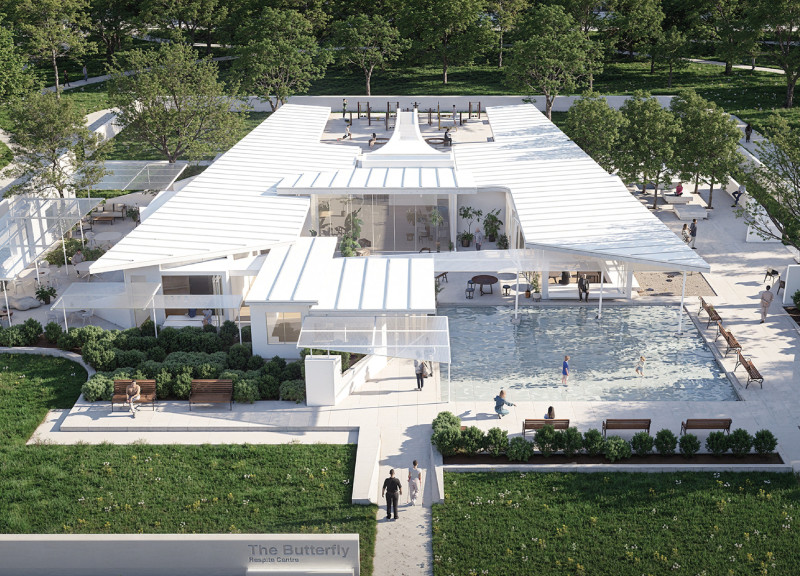5 key facts about this project
Upon entry, one is immediately struck by the careful orchestration of space and light, with large expanses of glass that facilitate a seamless connection between the interior and the exterior. This feature not only enhances the inhabitants' experience but also ensures that natural light permeates deep into the building. The geometry of the structure plays a critical role in achieving this balance—angles and curves are employed thoughtfully, creating a dynamic yet inviting ambiance. The careful planning of sight lines enhances the connection with the surroundings, allowing occupants to engage visually with the environment, thereby enriching their experience within the space.
The aesthetic approach of the design draws from a palette of materials that speaks to both modern elegance and practical durability. Prominent materials used include reinforced concrete, which serves as the structural backbone, alongside steel elements that contribute to both stability and visual rhythm. The choice of glass facades serves a dual purpose; it not only fosters transparency and openness but also serves as a thermal buffer, improving energy efficiency. Additionally, the use of wood accents in particular areas adds warmth and tangibility, inviting a sense of calm and comfort amid the starkness often associated with urban environments.
A significant aspect of this project is its function, which aims to serve a dual purpose as both a community hub and an innovative workspace. This duality is reflected in the design, which incorporates flexible spaces that can be adapted for various uses. Open-plan areas encourage collaboration and interaction among users, while more intimate spaces offer privacy for tasks requiring concentration. The integration of communal areas—such as breakout lounges and a rooftop garden—transforms the project into a microcosm of community life, where social interaction is encouraged and facilitated.
Additionally, this project employs sustainable design strategies, which are increasingly becoming a benchmark in modern architecture. Features such as green roofs, rainwater harvesting systems, and high-performance insulation demonstrate a commitment to environmental stewardship. These elements not only contribute to reducing the building's ecological footprint but also enhance the overall wellness of its occupants by providing healthier indoor environments and reducing utility costs.
What sets this architectural project apart is its holistic approach to design. Each component, from the choice of materials to the configuration of spaces, is meticulously considered to forge a coherent narrative that aligns with the aspirations of its users. This intentionality manifests as a fluid expression of architectural ideas, where aesthetics are not merely an afterthought but interwoven seamlessly into the functional schema of the building.
The project also reflects an understanding of locality. It engages with its context, respecting the cultural and historical threads of its environment while looking toward the future. This responsiveness is another layer of complexity that enhances the overall architectural dialogue, allowing the building to resonate with both its immediate surroundings and the broader urban fabric.
Exploring the architectural plans, sections, and details will offer further insights into the thoughtful design and execution of this project. Each architectural design element contributes to the overarching narrative of the building, showcasing a commitment to quality, sustainability, and usability. To gain a deeper appreciation of the architectural ideas presented, readers are encouraged to delve into the project’s presentation, inviting a more comprehensive understanding of its design journey and the impact it is poised to create within the community.


 Bryan Entong Ye
Bryan Entong Ye 




















